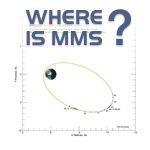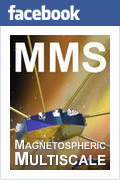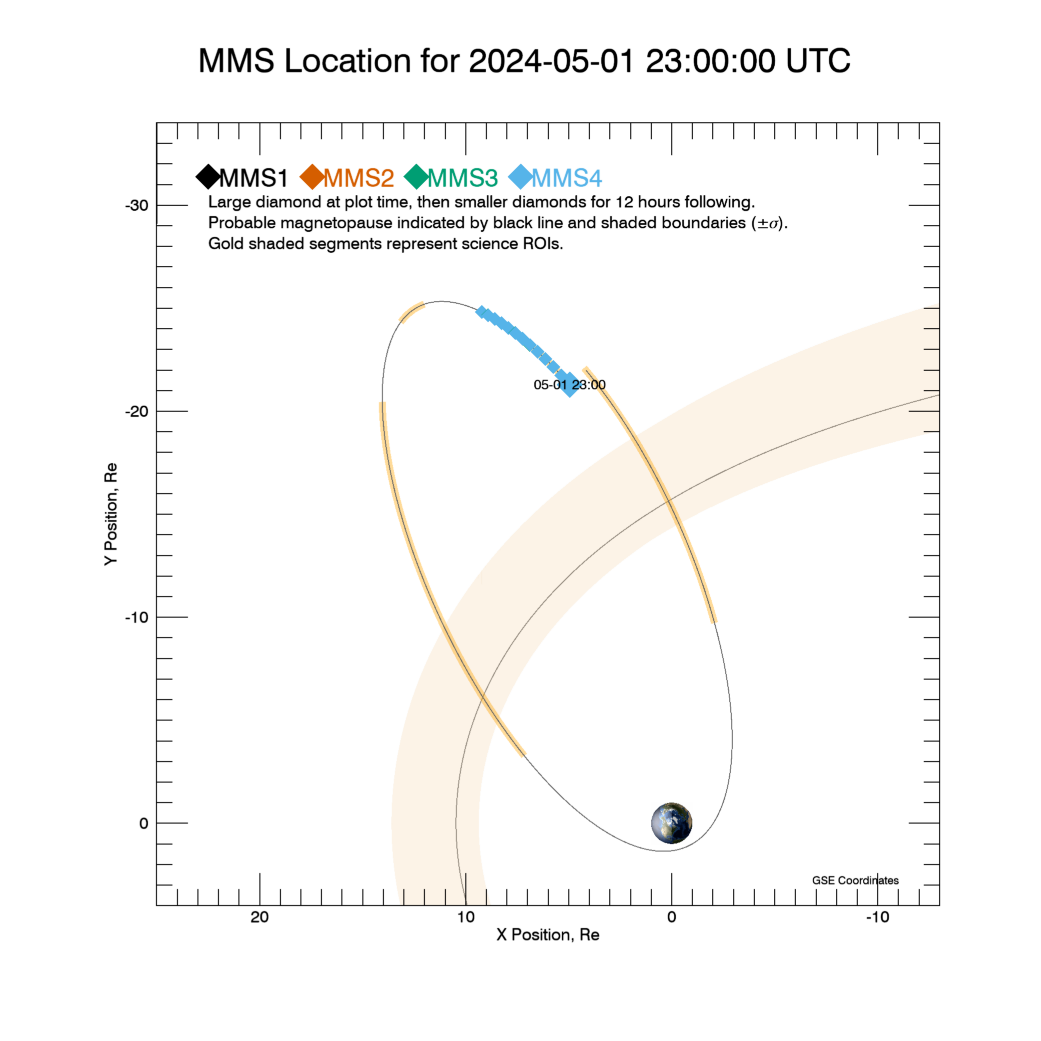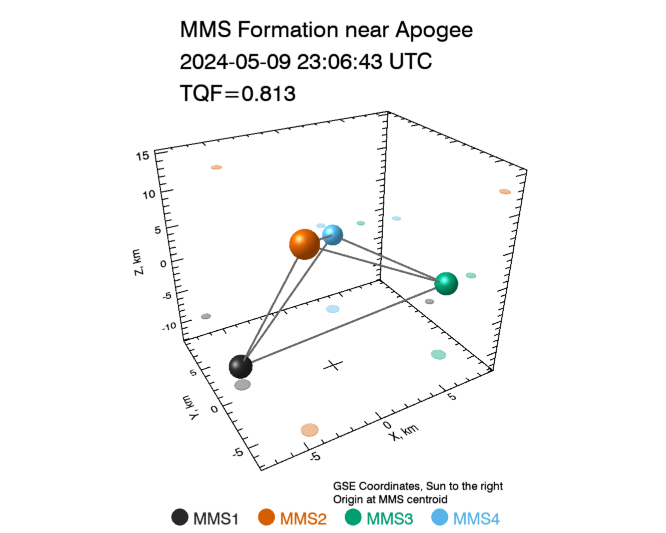Where is MMS Now?
This is a plot of the location of the four MMS spacecraft for the next few hours. The entire MMS orbit takes about one day. The four spacecraft are in a close tetrahedral formation near apogee, but when they near the Earth, orbital dynamics make the four string out into a line. The orbit is plotted in the ecliptic plane (the plane of the Earth's orbit around the Sun). The Sun is far to the left (23,481 Earth radii) in this figure. See more information about tetrahedrons, including a paper model.
The times are given in UTC (Coordinated Universal Time), which is a similar to Greenwich Mean Time (GMT), or the time in Greenwich, England, in winter. So for EDT, subtract 4 hours; CDT or EST, subtract 5 hours; CST or MDT, subtract 6 hours; MST or PDT, subtract 7 hours; PST, subtract 8 hours. (http://www.timeanddate.com/time/aboututc.html)
NOTE: The MMS mission uses a special Red-Green-Blue color bar that is visible to people with typical Red/Green color blindness. Our red is "vermilion", the green is "bluish green" and the blue is "sky blue". (http://jfly.iam.u-tokyo.ac.jp/color/)









